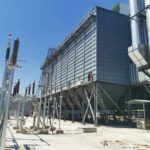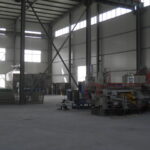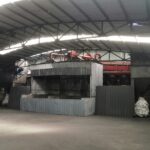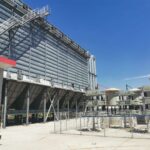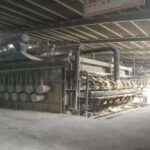A Guide to Selecting the Right Cored Wire for Steelmaking
Cored wire technology is a cornerstone of modern steelmaking, enabling precise, efficient, and economical addition of alloying elements, inoculants, and modifiers into molten steel. The correct selection of cored wire is critical for achieving desired steel chemistry, improving mechanical properties, enhancing castability, and ultimately reducing production costs. This article provides a comprehensive guide to the key factors involved in choosing the optimal cored wire for your application.
1. Understanding the Primary Objective
The first step in selection is to clearly define the purpose of the treatment. Cored wires are primarily used for:
Microalloying: Adding elements like Vanadium (V), Niobium (Nb), and Titanium (Ti) for precipitation strengthening and grain refinement.
Deoxidation & Desulfurization: Using wires with Calcium (Ca), Calcium Silicon (CaSi), or rare earth elements (e.g., Lanthanum) to clean the steel by forming and removing non-metallic inclusions (e.g., Al₂O₃), improving castability and toughness.
Shape Control of Inclusions: Modifying the morphology of sulfides and oxides (e.g., using Ca wire to make globular calcium aluminates instead of stringy MnS) to enhance ductility and fatigue resistance.
Inoculation / Nodularization: In ductile iron production, using Magnesium (Mg) based wires (e.g., FeSiMg) to transform graphite from flake to spheroidal form.
Chemical Composition Adjustment: Fine-tuning the final analysis by adding elements like Ferrochrome (FeCr), Ferromanganese (FeMn), or Carbon (C) in a highly recoverable form.
2. Key Selection Factors
Once the objective is clear, evaluate these critical parameters:
A. Core Material Chemistry
The chemical composition of the powder inside the wire is the most crucial factor. The purity, grade, and particle size of the core material directly affect:
Recovery Rate: The percentage of the added element that is successfully absorbed into the melt. Higher purity often leads to higher and more predictable recovery.
Reaction Efficiency: Fine, uniform powder ensures a rapid and controlled reaction upon injection.
Final Steel Quality: Impurities in the core material can become unwanted inclusions.
B. Steel Strip Material and Thickness
The outer steel jacket is not just a container; it plays an active role.
Material: The strip must have good weldability and sufficient strength to withstand coil winding and straightening during feeding without breaking. Low-carbon mild steel is commonly used.
Thickness: The strip thickness determines the wire dissolution rate in the molten steel.
Thicker strip: Dissolves slower, allowing the wire to penetrate deeper into the ladle, which is ideal for large treatments and better yield (e.g., for CaSi treatment).
Thinner strip: Dissolves faster, suitable for shallow treatment or when a quick reaction is needed.
C. Wire Diameter and Fill Ratio
Diameter: Standard diameters range from 9mm to 16mm. The choice depends on the feeding equipment’s capability and the required addition rate (kg/min). A larger diameter allows for a higher mass addition rate.
Fill Ratio (Core Weight / Total Weight): This ratio, typically between 30% and 45%, must be optimized. A high fill ratio maximizes core material per meter of wire but can compromise the mechanical integrity of the wire, leading to breakage. A low fill ratio is robust but less efficient for transport and storage.
D. Process Parameters
The selection cannot be divorced from the specific melting shop conditions:
Ladle Size: Larger ladles may require thicker wire or higher feeding speeds to achieve the necessary penetration depth.
Molten Steel Temperature: Higher temperatures can accelerate the dissolution of the wire jacket and the reaction of the core material.
Feeding Equipment: The chosen wire coil size (weight) and diameter must be compatible with the available wire feeder.
3. Supplier Considerations
Choosing a reliable supplier is as important as the technical specifications.
Consistency & Quality Control: The supplier must guarantee consistent chemical composition, fill ratio, and mechanical properties (no breakage) from batch to batch.
Technical Support: A good supplier provides expert advice on selection, optimal feeding speeds, and troubleshooting.
Packaging: Wire must be securely coiled and packaged to prevent deformation, rust, or moisture absorption during transport and storage.
Conclusion
Selecting the right cored wire is a strategic decision that balances metallurgical objectives with practical and economic constraints. There is no universal “best” wire; the optimal choice is unique to each plant’s equipment, process, and final product requirements. A methodical approach—defining the treatment goal, understanding the interplay between core chemistry, wire geometry, and process parameters—will lead to improved steel quality, higher yield, and reduced overall cost of production. Collaboration with a knowledgeable supplier is highly recommended to navigate these choices effectively.

